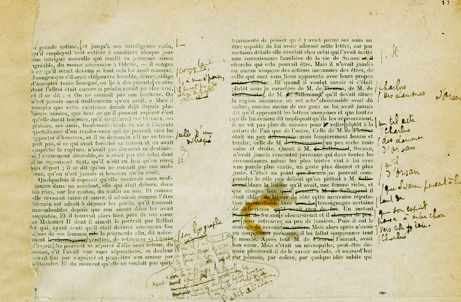Month #3


Since we last checked in with each other, we’ve been witness to a lot of global anger, but the spectacle that lingers like an embarrassment is the one we were treated to out of sunny Southern California: Murrieta, population 103,466, and growing – a fact it would seem the residents are not particularly happy about.
“Go home”; “We don’t want you,” crowds of these mostly white protestors shouted at buses carrying undocumented mothers and children from Central America. They did some spitting too, and illegal interfering with law enforcement, even as they condemned the illegality of the people toward whom they were hurling their hatred. The buses were operated by the Department of Homeland Security, moving these women and children for the purpose of deporting them. Perhaps, as suggested by Raul Reyes in The Huffington Post, some of the protestors were outside agitators, not actual citizens of this bedroom community in Riverside County. But there’s no quibbling with the fact that they were American citizens, and they were definitely behaving badly.
Despite the stirring eloquence of Emma Lazarus’s 1883 poem, the attitude of the general American population towards immigrants has never been encouraging. In brief, they are not welcome. Of course, we have to admire the United States for being the only country on earth that is actually composed of immigrants; it’s a very tough thing, this American experiment aimed at inclusion and equality. Yet, while most of us are from immigrant stock, the contempt and resentment persist.
In the 1920s, the decade in which my novel begins, a battery of quota laws was enacted specifically to minimize the undesirable influx of eastern and other ethnic Europeans. Not only were they, like all newcomers, subjected to stringent legal, medical and general knowledge tests that frequently had the effect of humiliating them as they disembarked at Ellis Island and other ports of entry, but quotas clearly favoring whiter northern Europeans had been codified in 1924.
Into this unwelcoming climate in the year 1929 steps my protagonist Yankel Himelbaum: eastern European and, owing to circumstances, forced to lie during his entrance exam. The lie and its consequences follow him through the entirety of his young adulthood (and the book) and reverberate with the terminology that has become all too familiar today. Yankel, who comes to be known as Harry, is an illegal alien, circa 1930s. Will Brown, the other main character in the novel, is a young lawyer specializing in immigration law. Rising in the ranks of the newly formed INS, Will has dedicated his career to ridding the country of job-stealing aliens like Harry. In brief, they must be deported.
Truth be told, when I landed on the story, and gradually came to realize that it was going to be the subject of a novel I would write, I had no idea how very timely it would be.
In six months A Tale of Two Citizens will be published! Ready, if all goes well, to be delivered into the world. “If all goes well”: like the expectant mother (and genetically programmed Jewish woman) I must be mindful not to take success for granted. Things can go wrong.
But at the completion of the first three months of pregnancy, the incidence of miscarriage is greatly reduced. The blastocyst cum embryo is now a fetus, fully formed with “arms, hands, fingers, feet, and toes,” per webmd.com. It feels safe to tell people, and most of us do. Of course, I’ve been blogging at you since Day One of the nine-month frame I created for these postings. And I was hoping that in the way of paralleling the completion of the first trimester of pregnancy and its accompanying revelation that I would be able with this post to reveal the book jacket of the novel. But the publisher tells me not just yet. Let’s wait with public release of the cover until the ARC is ready, an email advises.
The ARC is the Advance Reader’s Copy. Which, according to the publicity guide sent to me by the publisher, goes out to “editors and reviewers at book trade publications (such as Publishers Weekly) and review journals, as well as book and specialty retail, school, and library trade magazines.” The ARC, meant to engender early interest in the book, should be ready by the beginning of next month, I am told, which is pretty damn exciting, even to a woman inclined toward caution in all things.
(Indeed, since Dickens inspired the title of my novel, I could return to him to entitle this post and my overall approach to life, “Guarded Expectations.”)
The ARC is not to be confused with the final typeset PDF. As I understand it, the former lacks the final formatting of the latter. The equivalent of what were once referred to as “galleys,” the PDF, or Portable Document Format (created by Adobe Systems, keep in mind) will come to me in about a month, looking very much like the pages of the ultimate print and electronic editions, and will be my final opportunity to find and correct errors. Galleys used to be gone over with a pen or pencil, of course, but guess what program I need to proofread the PDF? Adobe Acrobat, anyone? Do I have any idea how to install or operate that program? As I said, things can go wrong.
Hopefully, by the next installment of “Birth of A Book” ARCs will have gone out, I will have mastered the 21st -century variety of proofreading, and will also be able to share the book jacket with you. This is the second version of the cover, by the way; the publishers, having been responsive to my reservations about the first version, went back to the drawing board and came up with a much more enticing cover that captures, I believe, the dramatic tension and overall atmosphere of the story.
Perhaps I will have received the PDF by my next posting, and be able to report that not one single thing needed to be corrected. Such was not the case for author extraordinaire, Marcel Proust. Here’s what his galleys looked like:

First galley proof of A la recherche du temps perdu: Du Cote de chez Swann with handwritten revision notes by the author.
The galleys that arrived for my book Father Loss looked very much like this, although, of course, they were in English, and they comprise one of my dearest remembrances of my mother.
During all of elementary school, junior high, and most of high school„ I was a pretty competent student writer, but each and every composition was gone over with a fine-tooth pen by my mother. A bit apprehensively, I would hand her the “finished” product as she sat at her customary place at the kitchen table, and sit opposite her as she read the pages, nervously hoping that maybe this time she wouldn’t find anything wrong. Never happened.
So when I received the galleys for Father Loss, my first solo book endeavor (Air Powered was a collaboration), I thought she’d get a kick out of going over them after I had. I made a copy and mailed the pages to her. (Paper, stamps, the post office – the whole bygone bit). This will make her really happy, I thought, and proud. And won’t she just love that the book is dedicated to her! All those expectations did indeed came to pass, but here’s the amazing and memorable thing: Selma Wakerman, who never made it past high school and worked her whole life as a secretary, went one better than the editors at Doubleday and her cocky published-author daughter: Mom found a spelling error in the galleys. Thanks to her, it is no longer there.
Something tells me that if she were still with us, she’d teach me how to use Adobe Acrobat.
See you next month, by which time I will have figured it out on my own.
I think.
~



